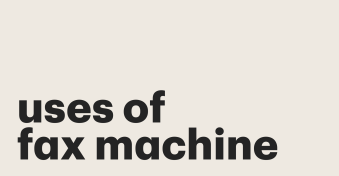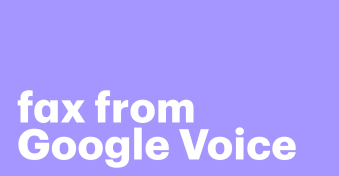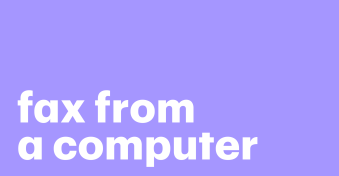As technology advances, the traditional methods of sending vital documents have given way to modern approaches.
One notable instance is the adoption of email as an alternative to faxing.
While email seems like the better option, there are instances where faxing still holds a significant advantage.
That’s why email service providers are now making it possible for users to send digital fax without using a physical fax device.
In this article, we will explore how to send a fax to email. You will also learn why fax is a viable alternative to email.
But first, let’s compare email to fax.
Fax vs. email: Which one is better?
A fax machine turns an original document into a digital signal and then shares it over a phone line to a receiving fax machine, which then prints out a hard copy.
This process is commonly used in various business, legal, and medical industries.
On the other hand, email is an electronic messaging system that allows users to send and receive digital messages and documents.
It is fast, convenient, and broadly used in business, education, and personal communication.
Essentially, anyone can learn how to fax from email.
The major difference between fax and email is the way messages are transmitted.
Fax machines use a physical phone line to send messages, while emails are sent over the internet protocols like SMTP and IMAP.
Also, fax machines require physical hardware and may be subject to malfunctions or paper jams, while email only needs an internet connection and a computer or mobile device.
One other significant difference is the format of the documents sent.
Faxes can only send and receive hard copies or scanned documents, while email can send varied digital formats, including PDFs, Word documents, spreadsheets, images, and videos.
Ultimately, the choice of format depends entirely on the sender’s needs and the document being sent.
How to send fax via email
The merging of faxing and email technologies has made it possible to send your fax via email instead of using a fax machine. Here is how it works:
- Sign up for an online fax service that supports sending and receiving faxes by Gmail. After signing up, you will be given a fax number.
- Go to Gmail > click “Compose” to create a new email message.
- In the “To” field, enter in the receiver’s fax number followed by the domain of the online fax service (123456789@faxservicename.com)
- Fill in the subject line and the email body.
- Attach the documents you want to send. You can send images and text-based documents, but PDFs and Word documents are universally acceptable.
- Click “Send” and wait for its delivery status to appear in your inbox.
Ways to send email to a fax machine
Here are three means of sending email to a fax machine:
1. Online faxing solutions
The use of web-based faxing solutions makes it possible for users to send faxes from their email accounts.
The email server then converts the message into a fax-friendly format that can be sent to a conventional fax machine.
Online faxing solutions also provide registered users with a fax number for receiving and sending faxes.
Online faxing solutions are cost-effective, adaptable, and very convenient.
2. Fax-to-email platforms
With these platforms, you can send faxes by attaching documents to an email and sending them to a specified email address.
You can also receive documents from a fax machine even if you don’t have a physical device in your office.
3. Email-to-fax tools
The same way you can send a fax to email, your email server can flip the board by converting email messages and attachments into a fax-readable format.
Although email-to-fax tools are easy to set up and use, they are not as reliable as other methods and may limit the size of documents you can send.
Why use fax instead of mail?
Despite email being a common means of communication, many still rely on fax machines to send and receive documents. Here are six reasons why:
Improve data security and privacy
Privacy concerns may arise from the storage of information when sending free email to fax.
Emails may be stored on a server accessible to unauthorized individuals, whereas faxes provide a hard copy that can be physically secured and protected from prying eyes.
However, it is worth noting that faxes are not entirely immune from malicious actors. If left unattended, unauthorized individuals can access the received documents on your fax machine.
Comply with legal standards
Healthcare, finance, and legal companies have compliance regulations covering the transmission of contracts, legal agreements, and sensitive information.
For example, the Electronic Signatures in Global and National Commerce (ESIGN) Act requires that electronic signatures be legally binding.
It also states that wills, trusts, and court orders must be faxed to be legally valid.
Similarly, in the healthcare industry, the Health Insurance Portability and Accountability Act (HIPAA) directs that medical records and patient information must be sent securely and in compliance with privacy regulations — and fax machines meet their standards with respect to secure methods for data transfer.
Preserve original document quality
When you send a fax through email, it is converted into a digital signal and transmitted as an exact original copy.
The receiving fax machine then prints a hard copy of the document, maintaining the original quality.
For instance, a medical report or X-ray sent via fax will provide a high-quality image that can be examined more closely than an email attachment, which could be tampered with during the transfer.
Improve accessibility
Accessibility is an important consideration when it comes to communication.
Unlike email clients, which need specific software and device compatibility, faxes are generally more accessible to a broader range of users.
Individuals or organizations with limited access to reliable internet or modern devices can still use fax machines.
Besides, these devices do not require special training or knowledge to operate, making them more user-friendly and accessible.
Best practices for sending fax to email
Here are the recommended best practices when sending a fax to email, or vice versa.
1. Verify the recipient’s identity
Before sending any document, always confirm that you have the recipient’s correct fax number.
This will reduce errors or miscommunications and ensure your fax arrives at the intended recipient’s location.
2. Confirm all attachments before sending
We all know that facepalm moment when you send an email only to realize you forgot the attachment.
To avoid double-faxing recipients, always confirm that the attachments are in place. It is also a good idea to ensure the document is legible and in the right file format.
3. Confirm receipt via notifications
Many online fax services provide notification options, like text messages or emails, tailored to the sender’s preference.
This practice helps avoid disputes arising from a lost or undelivered fax by assuring the sender that the fax was successfully delivered from your end.
4. Send sensitive information only via secure channels
Whether sending fax to email or email to fax, you should ensure that your message is traveling through secure channels.
You must also pay attention to compliance rules when sending faxes in highly regulated industries.
5. Choose trusted online fax solutions
Selecting a reputable online fax solution guarantees the safe and reliable delivery of your document.
With a highly reputable solution, you can send documents for free without worrying about security.
Conclusion
Faxing may seem outdated in the age of email and instant messaging, but it still serves an important purpose for many institutions.
The reasons include the need for confidentiality, the reliability of delivery, and the ability to send signed documents.
Hospitals, law firms, and government agencies have regulations that require using fax for certain types of communication.
As the world evolves, it will be interesting to see if faxing remains a key means of transmitting data or if it eventually becomes obsolete.
Frequently asked questions
-
Some people still use fax instead of email because it’s required by law in certain industries. Another reason faxing remains popular is that some organizations lack the technology or technical know-how to switch to custom email servers.
-
Fax is better than email in certain situations where the security and authenticity of the document are important. Hackers and scammers can intercept your email through spamming and ransomware. But with faxes, they need access to your phone line and fax device in order to intercept your file transmission.
-
Email is faster than fax on average. If there are no issues with the recipient’s email address, you will be able to send fax to email instantly. Similarly, your fax can receive instant fax from an international number, depending on how unclogged the phone lines are.
Disclaimer
PandaDoc is not a law firm, or a substitute for an attorney or law firm. This page is not intended to and does not provide legal advice. Should you have legal questions on the validity of e-signatures or digital signatures and the enforceability thereof, please consult with an attorney or law firm. Use of PandaDocs services are governed by our Terms of Use and Privacy Policy.


